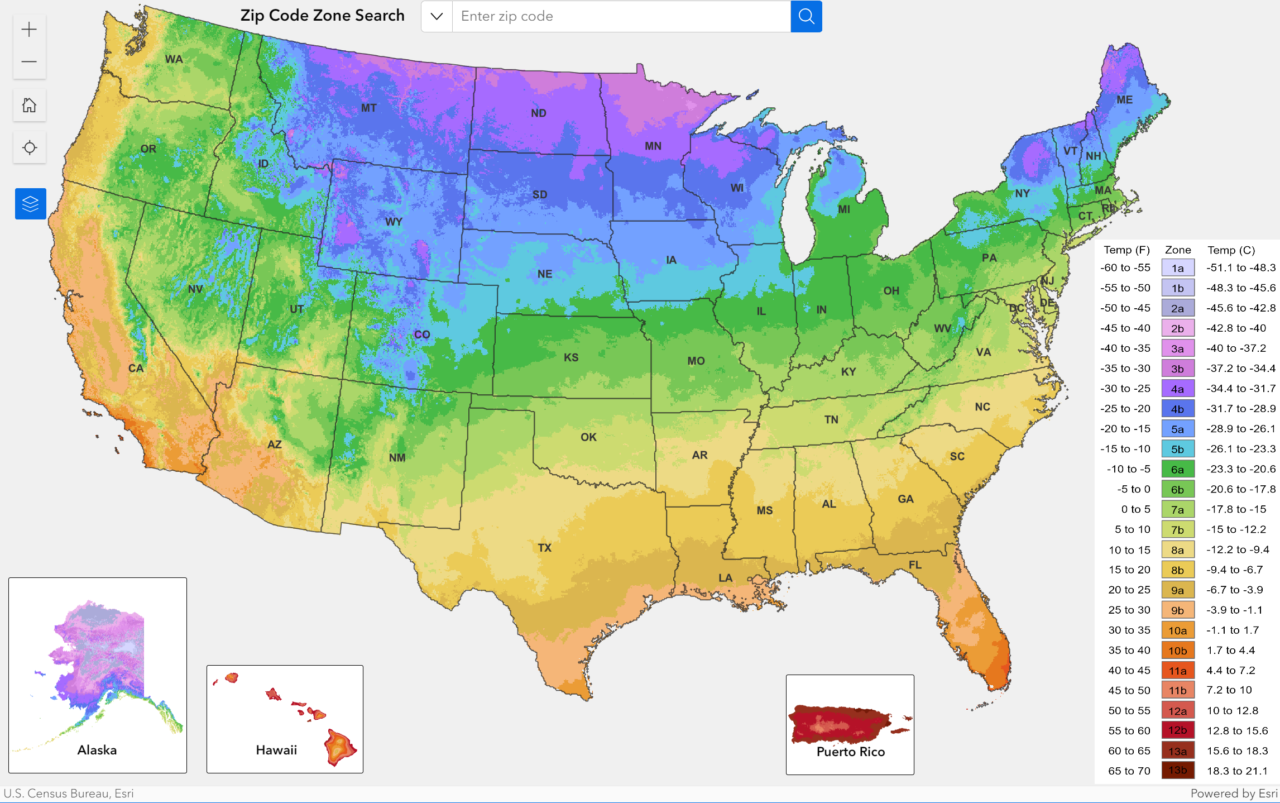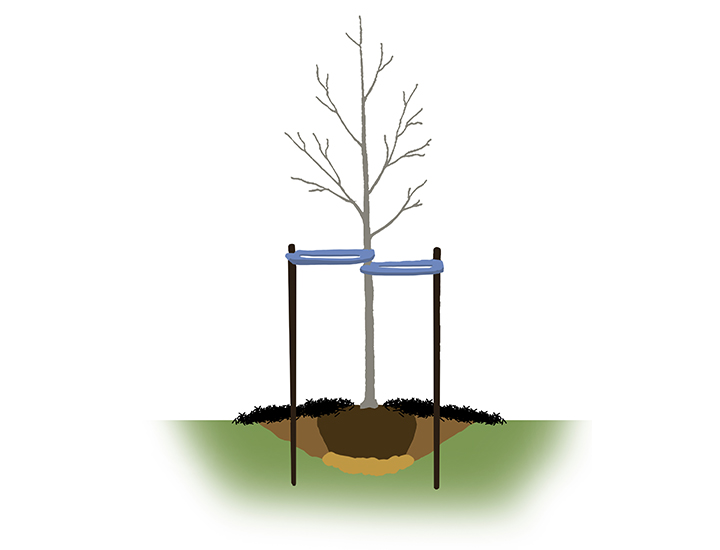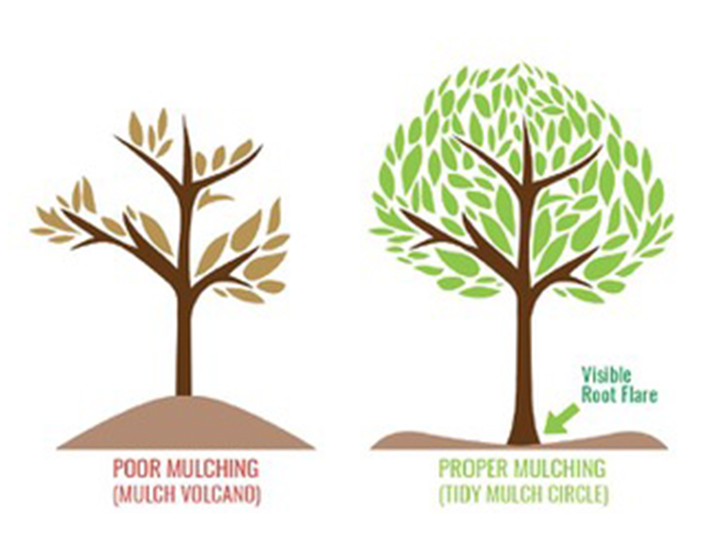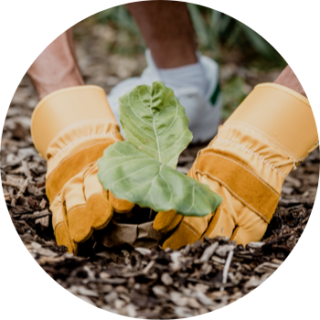There are many benefits to planting a tree on your property. Trees lower your utility bills by shading your house in the summer and allowing the sun to warm it in the winter. They clean the air and absorb stormwater runoff. Trees help fight climate change, and they’re even linked to better mental health.
To get all the benefits of a tree, you need to make sure you select and plant your tree so that it can thrive. We call this “right tree, right place.”
1. Select the right tree
All trees are different. Decide whether you want a shade tree, a small flowering tree to brighten up a shady corner, a tree that will attract wildlife or something else. You can ask your local arborist, university agricultural extension, botanical garden or plant nursery for tree recommendations. The internet is also a great resource. The USDA’s Plant Hardiness Zone Tool will tell you what your local planting zone is, though keep in mind that climate change is quickly altering these zones.
You might want to consider planting a tree species that is native to your general region, rather than a species from Asia, Europe or from the other side of the United States. Native trees are adapted to local conditions, and provide essential habitat and food for wildlife like birds and butterflies. You can use a tool like the Audubon Native Plant Database to look up trees that are native to your area.
When you’re ready to buy, call ahead. All garden centers might not carry the tree you want. Specialty nurseries such as native plant nurseries may have a better selection. Or, reach out to your town or city. Some municipalities give out free or inexpensive trees, or have tree rebate programs.
Be careful never to plant invasive trees, including mimosa, tree-of-heaven, Norway maple and black locust. Invasive trees can compromise ecosystems.

Photo Credit: USDA
2. Be “climate smart” in your tree choice
The earth’s climate is changing rapidly. Some areas will experience more intense droughts. Others will weather more severe storms. Almost everywhere will be hotter. Some tree experts are now recommending that you plant trees that are suited to the climate conditions your area will experience in 30 or 50 years.
Because of this, you may want to choose a tree species that can tolerate higher heat, or more intense droughts. You could also consider a tree species that currently grows at a lower elevation, or several hundred miles to the south of your location.
3. Choose the right spot to plant your tree
Trees have specific requirements for sunlight, soil and climate. A tree that needs full sun will not thrive if you plant it in shade, while another that needs dry soil might die if you plant it in a wet spot.
“Full sun” means at least 6 hours each day of direct sunlight. “Partial shade” means an area receives dappled shade throughout the day, or two to four hours of direct sunlight. “Shade” means two or fewer hours of sun each day.
Make sure that your tree doesn’t cause problems as it grows. Plant trees at least 15 feet away from buildings so there is enough room for roots and branches to reach full size. Make sure that the tree won’t disrupt power lines, sidewalks and other infrastructure as it grows.
Select a site that is far enough from your neighbor’s property that the branches won’t extend into their yard. Or, talk to your neighbor about the benefits of sharing the shade from your tree as it grows.
4. Carefully remove the tree from its sack or container
Do not hold the tree by its trunk, as that can cause the trunk to snap off and kill the tree. If your tree is containerized, hold onto the container and gently slide the tree out.
Do not leave the tree in bright sunlight or hot temperatures before you plant it. Instead, leave it somewhere cool in the shade.
Trees that are kept in containers for too long often have roots that grow in a circling pattern. As these wrap-around roots grow, they can “girdle” or strangle a tree. Use your hands to loosen and tease apart the roots. You can also take a sharp knife and cut an X in the bottom of the root ball to help break up overly compacted roots.

Photo Credit: Brad Latham
5. Prepare the planting site, and plant the tree
Remove grass and other plants in a several-foot radius from the planting hole. Grass can absorb water and nutrients that a young tree needs to thrive.
Dig a hole that’s no deeper than the tree’s container or sack, and three to five times as wide as the size of its container. This helps the roots spread out as they grow, making for a healthier tree.
Gently place the tree in the center of the hole, and backfill the hole with the soil you dug out. When filling your hole with soil, don’t go any higher than the root flare — the spot where the trunk transitions into the roots at the base of the tree. The flare should be exposed and slightly above ground. It’s always better to plant your tree too high than too low.
6. Add mulch
Mulch is great to add after a tree is planted. It looks nice and, more importantly, it helps keep the soil moist. Apply mulch between 2 and 4 inches deep, starting at least four inches from the root flare and working your way outwards.
A common mistake is piling mulch against the trunk of the tree. Although you may have seen trees with thick applications of mulch against the truck and root flare — so-called “mulch volcanoes” — this can actually kill a tree. If mulch touches the tree’s root flare it can invite pests, cause the trunk to rot, or cause the tree’s roots to grow up into the mulch and girdle the tree.

Photo Credit: Sustainable Saratoga
7. Water properly
Trees need more water when they’ve just been planted than when they’re established. For the first two weeks after planting, water the tree every day. For three to 12 weeks after planting, water every two or three days. After that, give the tree plenty of water once a week until it’s established, which usually takes three years. There’s no need to water if there’s been adequate rainfall. Overall, you want the soil to be moist but not soggy.
8. Know when to use fertilizer and other inputs
Fertilizer does not fix all of a tree’s problems, and many trees don’t actually need fertilizer. So long as your tree is growing and its leaves look healthy, it doesn’t need any extra nutrients.
Consult with an arborist if your tree is showing signs of ill health like yellowing or dying leaves. Oftentimes these may be related to other issues, including over- or under-watering, compacted soil, too little sunlight, improper pruning, or pests and disease.
Avoid using pesticides and herbicides. Many of these chemicals are linked to negative health outcomes for people, insects, and birds. Herbicides intended for weeds can wind up hurting your tree.

